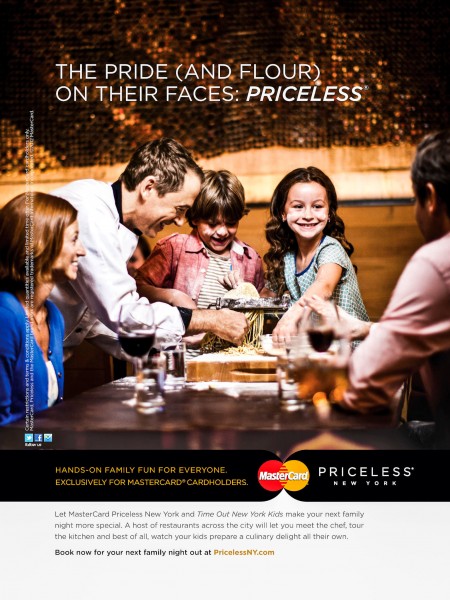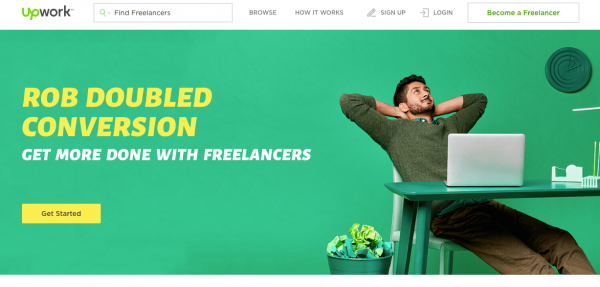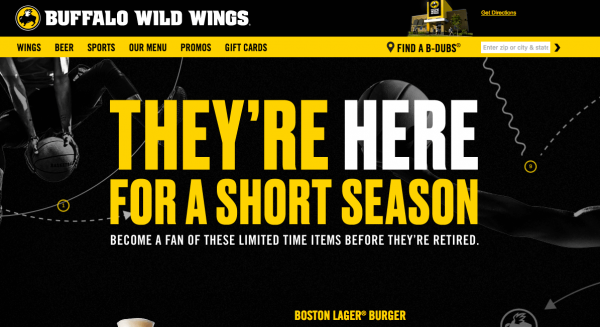11 Strategies for Applying Marketing Psychology to Increase Your Business
Picture it –– you’re headed to the supermarket on a Wednesday evening in the summer. It’s late, and you’ve got one mission: get bread, eggs, and milk.
While approaching the plaza, you see the familiar logo of your local supermarket brightly beaming in red lights, with their slogan below: quality convenience, affordable prices.
You park the car and head inside, determined to make this a quick stop.
While preparing to beeline it to the back to get the essentials, a nearby sign catches your eye. Ten for $10 bottled soft drinks, it boasts. (I love soft drinks!) And only for loyalty card holders. (I have one of those!) For a limited time only. (This deal is too good to pass up!)
On second thought, you grab a basket.
Behind the stack of baskets and carts is a wall of photos of smiling customers, including a few prominent community members who shop at this store. (Hey, I know her!)
You hastily throw four Cokes, three diet Cokes, two Mountain Dews, and a Fanta in your basket. (Thank goodness I noticed that sign!)
Without realizing it, the overhead music is playing the store’s familiar jingle. Under your breath, you start humming the tune that boasts “we save you the runaround, we’ve got everything you need.”
As you start winding your way towards the bakery at the back of the store, you pass an endcap on one of the aisles. Marshmallows are on sale! (I haven’t had a marshmallow in so long… It reminds me of when I was a kid and had campfires with my cousins.)
When you get a little closer, you notice the Hershey bars and graham crackers right alongside. (Why not! S’mores are delicious.)
Instances like this continue until… it’s nearly an hour later and you’re at the cash register, basket full to the brim.
Your total? $48.53. (WHAT?)
Begrudgingly, you swipe your debit card on the little plastic platform that reads “satisfaction guaranteed” and head towards the door, bags in both hands.
While passing through the automatic doors, you spot a comment box with the above sign reading, “We care about your customer experience. Please let us know how we can serve you better.” (Aw, that’s nice…)
On the drive home, you have a crushing realization: you didn’t buy bread, milk, or eggs.
What the hell just happened?
You just got marketing psychology-ed.
What Is Marketing Psychology?
Call it mind games, call it inception, call it manipulation.
Viewed more positively, call it strong targeting, focused messaging, or on-point nudging.
Marketing psychology, roughly defined, is the study of psychological processes and subsequent behaviors, which can be utilized to increase the likelihood of customers ultimately purchasing something, otherwise known as conversion.
While these strategies are the kinds of things Mad Men probably discussed behind closed doors, they are not always at the forefront of our minds as consumers (see above vignette).
As business owners, it is crucial to be aware of and understand this information so as to employ strategies thoughtfully, tactfully, and tastefully, with the ultimate goal of increasing sales.
So, what are these mystical marketing tactics and how might you use them?
Additionally, how might you use them in such a way that you’re not accused of manipulation or other underhanded tactics?
We’ve got some ideas.
1. Distill Your Message Down to Its Essence for Easy Recall
There’s a lot to pay attention to on the internet, and humans tend to be bad at multitasking. Make sure your content is worth paying attention to and contains a succinct nugget of information that you want your customers to remember.
Painful as it might be to hear when you spend hours crafting beautifully worded content, in the end, people will likely only remember the gist of what you tell them. Blame the verbatim effect.
So, make that gist simple, clear, and repeatable.
Typical examples: jingles, catchy slogans, clickable headlines.
How you can do it better:
Cut the clutter. Prioritize the most important message in all of your content, and make sure it is easily understood and emphasized throughout your content.
This could take the form of pullout quotes, easily tweetable phrases, or recurring messaging across your site and its marketing materials.
Buy One, Give One has distilled the core essence of their work into an easy to recall phrase that has been even further shortened into an acronym, B1G1.
2. Organize Information Meaningfully so People Pay Attention
Our brains are small yet mighty machines that are constantly processing and making sense of the information around us. They help us find patterns and make connections by associating new information with what we’ve stored from past experiences.
Additionally, even as we might try to fight it, our brains just aren’t good at holding our attention on a lot of information at once. As such, we are much more likely to pay attention to and remember content that has been organized into meaningful and digestible chunks.
Think of the difference between shopping at a department store (clean, open spaces, clothes on racks) versus shopping at a flea market (messy, items in piles, mishmash). At a department store, you know exactly where to go to find what you’re looking for thanks to the good organization and signs indicating which sections are which.
Which one are you more likely to shop at?
Typical examples: Signs, Categories, Subheads.
How you can do it better:
Take another look at how information is organized on your site or in your store. Sure, it might make sense to you, but does it make sense to the consumer? Include your target customer in your site design to get constant feedback on how well things are laid out and how easy it is to navigate.
Consider incorporating their feedback, and make ease of experience your primary concern. If necessary, update your content organization and labeling to make sure people can be focused on what matters: your message (see number one).
Duolingo’s clear, simple design makes it really easy to know where to click to do what you came there for: learning.
3. Use Word Associations to Build Trust
Let’s do an experiment. I’m gonna write a word below, and I wanna know what pops up in your mind after. Ready?
The word is…
Sharp.
What did you think of? Scissors? A shark tooth? A knife? An edge? A snazzily dressed GQ model?
As I mentioned above, since very early on in our lives, our brains are making associations between words and other things related to them. We do it largely for our own survival (car hurtling toward me a 60 mph = danger = risk of death = Get out of the way!).
So when it comes to word associations in marketing, our goal is to associate our business or brand with a very tricky value to gain: trust.
Typical examples: Stamps of approval, seals of authenticity, or certified labels.
How you can do it better:
Pretty simple: use trust-inducing language to portray the quality of your products or services. Words like “certified,” “guaranteed,” and “proven” can help assure your potential client that they have nothing to fear in purchasing from you.
Depending on your industry, you may also look into getting certified or approved from an outside body, like the USDA Certified Organic label in food products, or B Corporation certification for a social enterprise.
The catch? You need to do this honestly. Don’t just throw in these words to make something sound good when it’s actually not. Lying is a great way to lose the trust of your clients.
Stand behind what you sell.
Labels like the USDA Organic’s help people immediately associate a product with a standard of quality or particular set of values.
4. Demonstrate Value by Focusing on Solutions
We make a lot of our purchasing decisions based around perceived value. Based on past experiences, we have a sense that an average soda should cost around $1.50, a book $15-20, etc.
Depending on the product that you sell, you may need to help your potential clients associate your services with value in some tangible way, so that they feel they are making a worthy financial investment.
Typical examples: This product will save you $X in money you would have spent; This course typically costs $X, but you’ll only pay $Y.
How you can do it better:
Don’t just focus on dollars, focus on personal value. Your business is in some way alleviating or solving a problem faced by your consumer. Emphasize the ways that their life will be improved by their purchase and how their small monetary contribution will ultimately lead to an outcome that is worth a lot more than that.
Mastercard nailed this strategy with its Priceless campaigns, which honed in on the idea that meaningful emotional experiences don’t have a direct dollar value.
5. Use Visuals and Colors to Set the Tone for Buying
Like word associations, our brains have developed associations over time with colors, too.
Without even a thought, you know that “red” is a color of bad, danger, stop, while “green” is good, safety, go. Beyond these primal associations, psychologists have spent lots of time looking into other effects, such as how color impacts creativity, and even likelihood of purchasing.
The colors of your brand, website, and other marketing materials may be having a significant impact on how willing your potential customers are to buy from you.
Typical examples: Amazon “buy” button color scheme, safety signs, warning signs.
How you can do it better:
Honestly, on this one there is no reason to try to reinvent the wheel… the color wheel, that is.
Play with different versions of designs that you create in your brand colors, whether it’s newsletter layouts, website updates, or even buttons.
Run A/B campaigns to get an idea of which ones have a greater clickthrough rate, and begin incorporating more of those designs into your materials.
Don’t be afraid to copy off of what the big dogs do here, either. There’s a reason they are the big dogs.
Doesn’t the Amazon buy button just make you wanna click?
6. Get Their Foot in the Door, Then Start to Shut It
I know, this sounds like I’m condoning purposeful ankle violence. But I promise, no ankles were harmed in the making of this strategy.
If you have ever enjoyed a free trial, sample, sneak peek, test run, or other seemingly free ride, you’ve been pulled in via this tactic.
Here, marketers employ loss aversion, or the idea that we as humans have a hard time losing something. It is much harder to give up something we had and liked than to walk away from an unknown opportunity.
We feel loss painfully and would like to avoid it, often at all costs.
Typical examples: 30-day trials of a premium version of a software program.
How you can do it better:
Think of the free trial, sneak peek, test drive, or whatever else you might offer as an opportunity for a relationship. It’s a time when you can gain information from the user, see how they are interacting with your product, and get an idea of how best to serve them.
You might have email check-ins during that time, webinars, or guided tours set up on a live call.
You can also use their decision to end the free trial as another opportunity to keep them in the fold, by offering them an extension, or another payment option to help make them stay.
Amazon, who just really doesn’t want me to let go of my Prime membership.
7. Get Emotional
As much as we might think that we are all logical, rational individuals, at the end of the day, we make a lot of our decisions with our heart rather than our head.
That means that even if your product or service is the logical choice for lots of clear and sensible reasons, referring to these is not necessarily the best way to get someone to buy.
Appealing to your customers’ gut instincts may in fact be the best way to also appeal to their wallet.
Example: Sarah McLachlan’s heart-wrenching animal cruelty TV spots, over-the-top infomercials.
How you can do it better:
There’s a fine line between using customer research and empathy to craft strong marketing campaigns and taking advantage of people. You want to make sure you are connecting with potential customers’ emotions, and not exploiting them.
Again, return to the notion of your product/service solving a problem or relieving some kind of pain point. Tap into what that emotion is. Anger? Frustration? Fear? Actual pain?
Infuse these emotions into your marketing so that you can show how such emotions will be reduced or alleviated and replaced by positive emotions through the solution you offer.
What emotion do you see in this Upwork snapshot? Can you identify with how he’s feeling?
8. Use Social Proof as Your Friend
If you’ve been through the socially precarious bootcamp known as high school, you know how much of an impact social pressures, including the “in” and “out” groups, can have on behavior.
The news (good or bad, depending on how you look at it) is that, in a way, we never actually leave high school because to some extent we continue to be governed by these groups.
Call it social proof, call it the bandwagon effect, but at our core even the most lone wolves among us don’t want to be left out of something fun and exciting.
Typical examples: Hundreds of business owners have already discovered the magic of XXXX, Don’t be left out from the new social network sweeping the globe.
How you can do it better:
The better you know your customers, the better this strategy can work.
People don’t want to be a part of just any group; they want to be a part of the group. They want to know that their membership to such an exclusive club will provide them with a benefit they would not have otherwise had access to.
When emphasizing joining or becoming part of a community of some kind, be sure to play up how said community specifically fits for who you are talking to. Use case studies and testimonials so that those on the fence can see people who look like them, with similar goals and interests.
Xero combines highlighted pull quotes from individuals with a high number count, demonstrating how many others have already subscribed.
9. Create a Sense of Urgency/Scarcity
As we mentioned in number seven, we humans are pretty damn emotional. When under pressure, we tend to make rapid decisions so as to not miss out or make a mistake.
Marketing can create these scenarios by offering opportunities for sales or other limited time offers that have only a small window in which to be taken advantage of.
Customers then must crunch their think time, which increases the odds that they will click “buy” and do it soon.
Typical examples: limited time offer, short-term opportunity, only 3 spots left!
How you can do it better:
Recognize that your customers are smart, and they can probably sniff out this strategy, as it’s used so frequently in business and marketing.
Be choosy about what products/services you are willing to discount or place in this special category, and do not overuse this strategy. If your regular customers start to catch on that you do this a lot, they’ll eventually just start waiting you out.
This last part is key: stick to your word. Once the window is closed, it’s closed. Period.
Buffalo Wild Wings wants you to come try their new menu items sooner rather than later.
10. Give People a Reason to Like You
When growing up, you probably learned the Golden Rule — basically, treat others well. Pretty simple.
Turns out this isn’t just a decent rule for life, but it works in business, too.
Think of it this way: when people first come across many businesses, they don’t initially have a reason to like or dislike them. They’re just there.
Great businesses know that creating value for customers without demanding anything in return is a great way to improve the chances of a potential customer selecting them over a competitor.
Most people want to do something nice for someone who does something nice for them. Similar to the foot-in-the-door strategy, being nice to potential customers from the get-go helps a relationship start to form rather than just a transaction.
Example: free ebooks, free email courses, free chapter, free slide deck, free trial.
How you can do it better:
Adopt the abundance mindset over the scarcity mindset.
A lot of people think that if you give away too much stuff for free, people will think it isn’t valuable and won’t ever opt to purchase from you.
Turns out that idea is mistaken. By being very generous with what you can give to customers for free, you create a positive impression of your company as one that cares about its clients and doesn’t just want to make money off of them.
Giving is not only a nice thing to do –– it’s also a great way to build genuine trust and appreciation, with the often happy ending of leading to a sale.
Serial entrepreneur and world traveler Chris Guillebeau teases visitors with a familiar promise of a free prize inside to encourage people to sign up for his weekly newsletter.
11. Don’t Underestimate the Power of an Impression
Once you’ve seen something once, you see it everywhere. The power of a lasting impression can help businesses continue to influence potential customers simply by exposure.
Deemed the Baader-Meinhof Phenomenon, this occurrence is where we learn about something new, like a word or a person, and afterward, it just kind of seems like that thing is everywhere.
Businesses can use this to their advantage by using opportunities for first impressions to help themselves become familiar, thus increasing trust with possible consumers.
Typical examples: stickers, hashtag campaigns, guest posts.
How you can do it better:
Define your image and put it out there. Make sure that your website is not the only place where people will stumble across your business.
Utilize not only social media but also press coverage, guest appearances on podcasts or programs, guest posts, speaking events, and many other similar venues to increase exposure.
Maybe a potential customer won’t buy your product the first time they come across you, but the more they can find you organically, the more the possibilities for conversion grow.
Just one glance at the swoosh, and you know it’s Nike.
Marketing Psychology Demystified
The 11 strategies above are certainly not an exhaustive list of all the possible ways you can use marketing psychology to increase your business, but they are a good start.
Let’s think about our grocery store example from the beginning –– a common consumer experience for most of us. Did you realize all the methods they were using?
- Distill your message –– quality convenience, affordable prices.
- Get organized –– signage and product location (bread at the back!) to guide customers through the store.
- Use trust-building word associations –– Satisfaction guaranteed.
- Demonstrate value with solutions –– We save you the runaround.
- Use colors effectively –– the color red makes people hungry.
- Get their foot in the door –– free loyalty cards give immediate discounts and encourage frequent shopping.
- Get emotional –– S’mores nostalgia.
- Use social proof –– wall of acquaintances.
- Create urgency and scarcity –– Limited time offer!
- Give people a reason to like you –– empathetic comment box.
- Make an impression –– familiar logo that can be spotted from afar.
If these strategies work so easily on us at the supermarket, chances are they’ll work for you in your business as well.
The key is to not only use these strategies, but also to do so wisely, in a way that earns trust and best represents the high-quality business you have created.
Marketing psychology doesn’t have to involve mind games. When utilized authentically and honestly, it can be a fantastic way to create mutually beneficial relationships, both with current clients and with the ones you haven’t met yet.
Photo credit: pressmaster













